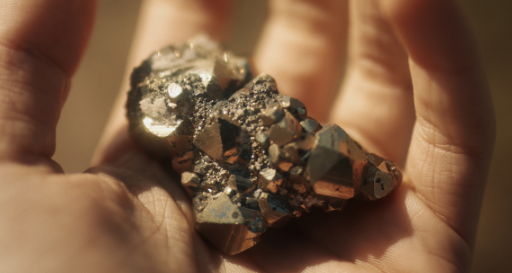Solar panels have experienced unprecedented progress in recent years. In fact, their efficiency has multiplied exponentially to date. In addition, there is a promising new material: perovskite.

Perovskite is a relatively rare mineral that is currently used to produce solar panels and achieves an efficiency of more than 20%. These cells are the most efficient in existence to date. It is also the fastest growing solar technology. However, contrary to what might be thought, its production costs are very low, making perovskite a highly attractive alternative.
So why is silicon and not perovskite the main raw material for most solar panels? Well, the main problem is that perovskite cells are currently under development due to their short lifetime. These cells still present some serious problems such as their high toxicity or their durability, although it is true that scientists are hopeful that they could be ready for the market in the next few years.
The efficiency of most silicon solar panels is between 15% and 18%, but it took more than 50 years to reach these figures. Silicon solar panels are becoming increasingly competitive, although it is true that they have limitations that perovskites do not. Moreover, perovskites have reached higher efficiency levels than silicon in only ten years of research.
It should be remembered that the efficiency of a panel depends mainly on the design of the cell and the type and purity of the silicon. Currently the efficiency of silicon cells is between 15 and 18%; those silicon panels whose efficiency is above 16-17% are considered high efficiency panels.
But perovskite aims to break these records! This mineral exhibits excellent optical, electrical and magnetic properties and its laboratory efficiency is currently above 23%. Up to 5 points higher than silicon cells. However, its main weakness lies in its stability, since these panels degrade easily.
Fortunately, processes are being developed to improve the stability of the solar cell. For example, the method called passivation, which consists of the formation of a kind of film that is placed on the active surface of the solar cell and eliminates the defects that are generated in its manufacture, which protects it from external agents.
But this is not the only method that is giving good results with perovskite. A recent study at Brown University has found that a molecular glue that prevents cells from degrading dramatically increases stability while improving the efficiency with which sunlight is converted into electricity.
Research with perovskite not only involves developing cells solely made of this material. Combined silicon and perovskite technologies have also been developed that show promise. According to studies reported in SciTechDaily, scientists have achieved an efficiency of 29.15% by developing cells formed by these two minerals.
In short, perovskite is a mineral that shows promise due to its abundance, its low production costs and its excellent qualities that make it the perfect material to form solar cells for panels. We will see if in the next few years the drawbacks that prevent this mineral from being used as a transforming element in the solar technology industry will be resolved.






